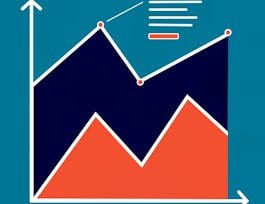In the era of big data, acquiring the ability to analyze and visually represent “Big Data” in a compelling manner is crucial. Therefore, it is essential for data scientists to develop the skills in producing and critically interpreting digital maps, charts, and graphs. Data visualization is an increasingly important topic in our globalized and digital society. It involves graphically representing data or information, enabling decision-makers across various industries to comprehend complex concepts and processes that may otherwise be challenging to grasp. DSCI 605 Data visualization serves as the foundation for understanding principles, concepts, techniques, and tools used to visualize information in large, intricate data sets. It also provides hands-on experience in visualizing big data using the open-source software R. Through the course, students will learn to evaluate the effectiveness of visualization designs and think critically about decisions, such as color choice and visual encoding. Additionally, students will create their own data visualizations and become proficient in using R.



Details to know

Add to your LinkedIn profile
9 assignments
See how employees at top companies are mastering in-demand skills


Earn a career certificate
Add this credential to your LinkedIn profile, resume, or CV
Share it on social media and in your performance review

There are 5 modules in this course
In the first module, we will learn what is data visualization, why data visualization is necessary in data science field, what data visualization will do and what skills data visualization need. We will first get started with R by learning R basic and R Markdown to prepare the data visualization in the course.
What's included
20 videos8 readings4 assignments1 discussion prompt2 ungraded labs
Understanding the elements and components of data visualization is essential for data visualization because it provides a systematic framework for creating effective and meaningful visual representations of data.In this module, we will explore the grammar of graphics, explain some rational, and introduce principles in data visualization, as well as describe the common Exploratory Data Analysis (EDA) idioms' features and applications.
What's included
8 videos2 readings3 assignments1 discussion prompt
Let's get our hands wet with real data visualization-producing a graph. In this module, we will explore the powerful data visualization package ggplot2. In this module, you will learn basic usages of ggplot() function, the fill and color aesthetics, and learn to create a histogram using ggplot() and setting suitable bin numbers or bin width.
What's included
8 videos5 readings1 assignment1 programming assignment1 peer review1 ungraded lab
Now you have conducted the basic data wrangling, documented your work in R Markdown, and created your first data visualization in previous modules. In this module, you will learn to embed, create and refer to images and tables in R Markdown. In addition, you will learn to produce scatter plots, which further enrich your visualization experience and enhance your visualization skills.
What's included
10 videos2 readings1 discussion prompt1 ungraded lab
This module will continue for one of the common EDA idioms-box plots to enrich your data visualization experience and will explore new technique-layout multiple plots on one page. In this module, you will learn to produce boxplots using ggplot(), interpret boxplots and arrange multiple plots on one page.
What's included
7 videos3 readings1 assignment1 programming assignment1 discussion prompt1 ungraded lab
Instructor

Offered by
Why people choose Coursera for their career




Recommended if you're interested in Data Science

University of Illinois Urbana-Champaign

Università di Napoli Federico II

Fractal Analytics

Open new doors with Coursera Plus
Unlimited access to 10,000+ world-class courses, hands-on projects, and job-ready certificate programs - all included in your subscription
Advance your career with an online degree
Earn a degree from world-class universities - 100% online
Join over 3,400 global companies that choose Coursera for Business
Upskill your employees to excel in the digital economy



